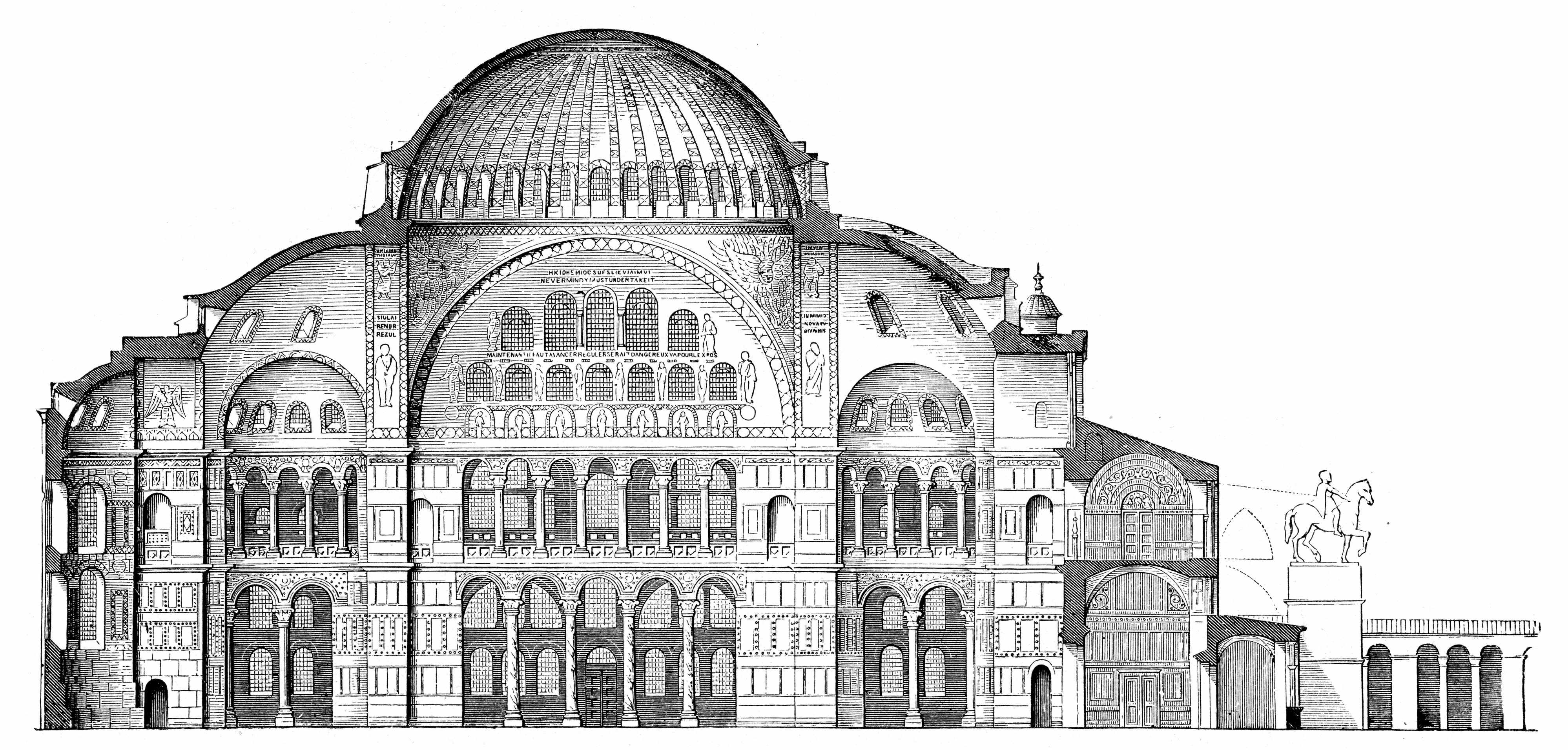The angel of Saint Sophia
The legend of the singular protector of the Constantinopolitan basilica

Longitudinal section of the Hagia Sophia in the Byzantine era - Wikimedia Commons
The Basilica of Hagia Sophia, dedicated to divine wisdom, was constructed near the imperial palace of Constantinople between 532 and 537. The project was commissioned by Emperor Justinian I (527–565), who entrusted the monumental undertaking to the architects and mathematicians Anthemius of Tralles and Isidore of Miletus. The impressive structure of the church, which remained the largest Christian place of worship in the world for the next thousand years, was built using intricate calculations and techniques unmatched in the Byzantine East during the centuries that followed.
For this reason, the inhabitants of Constantinople during the central Middle Ages—a time when churches the size of Hagia Sophia were no longer being built—could no longer comprehend how such an extraordinary building had been constructed. To explain it, they relied on legends involving supposed divine interventions and assistance.
One of these tales recounts that one day, the workers at the church's construction site went to lunch, leaving the foreman's son in charge of watching over their tools. While the boy waited, an angel descended from heaven and asked why the work had stopped, commanding the boy to summon the workers back to their duties, as the construction of the world's greatest church should not be delayed. The boy hesitated, as he had promised his father to guard the tools, but the angel reassured him, promising to watch over them himself and not to leave until the boy returned.
When the foreman and his workers received the angel’s message, they brought the boy to Emperor Justinian, who forbade him from ever returning to the basilica. In this way, Hagia Sophia gained a guardian angel who, according to the legend, remained on eternal watch over the construction site and the building for centuries to come.
Jonathan Harris, Constantinople: Capital of Byzantium, Bloomsbury Academic, London, 2017.
2025-10-14
Salvatore Ciccarello
